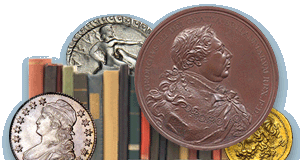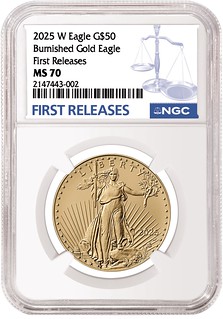
PREV ARTICLE
NEXT ARTICLE
FULL ISSUE
PREV FULL ISSUE
LOOSE CHANGE: JUNE 29, 2025Here are some additional items in the media this week that may be of interest. -Editor Jeff Garrett published an article for NGC on the American Gold Eagles. Here's an excerpt - see the complete article online. -Editor
A set of American Silver Eagles is affordable and can be completed with a modest cash outlay. Silver Eagles have been produced since 1986, with coins struck in Uncirculated and Proof. The mint has also sold several special finish coins for collectors, including Reverse Proof and Enhanced Uncirculated. A more recent innovation has been coins with special privy marks, such as the ones struck to commemorate the 250th anniversary of the US Army. Upon their release last week, the coins quickly sold out. The American Silver Eagles contain one ounce of pure silver and have an impressive physical appearance. With silver bullion selling for around $36 per ounce, the issues are attractive for collectors of limited means. These contrast sharply with the American Gold Eagles series. These coins range in size, and are produced in weights of 1/10 ounce, 1/4 ounce, 1/2 ounce and 1 ounce. The Mint began producing these in 1986, in accordance with the Gold Bullion Coin Act of 1985. The coins are guaranteed by the US government to contain the stated amount of gold and are required to contain gold sourced in America. The obverse features a modern rendition of the Augustus Saint-Gaudens Double Eagle design that was first used in 1907. Coins struck from 1986 to 1991 are dated with Roman numerals. In 1992, the Mint switched to Arabic numerals. The reverse design of a family of eagles was created by Miley Frost and features a male eagle carrying an olive branch above a nest with a female eagle and hatchlings. In 2021, the reverse was updated to feature a close-up portrait of an eagle. The new design was created by Jennie Norris. These bullion coins are legal tender and carry face values of $5, $10, $25 and $50.
To read the complete article, see:
Stack's Bowers Senior Numismatist Henrik Berndt published an article about a die variant collected by L. E. Bruun. Here's an excerpt - see the complete article online. -Editor The 2 Skillings of the Danish-Norwegian King Frederik III are what we would call "small change." Weighing slightly more than one gram, their value was limited, and even though the emissions were large they circulated heavily, and finding a Mint State example can be quite a challenge. The L. E. Bruun Collection includes an impressive number of Mint State examples, but today I would like to direct your attention to a VF-25, we are selling in the September 2025 CCO auction of selections from the Bruun Collection. The Norwegian 1660 2 Skilling doesn't normally stand out. It's a common year, it's a common type, and it looks like any other Norwegian 17th century 2 Skilling. This particular example, however, does stand out. On the reverse of the coin the denomination is written in the center. It should say ‘II SKILLING DANSK' but instead it reads ‘II SKILLING DANSS'. A rare coin with a spelling error is still a rare coin. A common coin with a spelling error will gain value percentage-wise. So it is with this coin: It goes from being a €50 coin to who knows, maybe double that, maybe much more. Only time, and the auction hammer, will tell.
To read the complete article, see:
An article in the English Le Monde discusses the near-total cashless nature of the Chinese economy. -Editor
The world's second-largest economy has undergone rapid digitization, and all daily transactions – from supermarkets to cafés, taxis to public transportation – are now made with one of two apps that have become vital to life in China: WeChat or Alipay. Their green and blue logos are displayed at every payment point, and many businesses no longer even keep a traditional cash register, but instead simply scan the QR code presented by the customer. Many taxis refuse cash payments, as do many neighborhood grocery stores, which often do not have the change to give back in any case. Ma Dian, a fruit and vegetable vendor from Hubei who works at this covered market in the capital, observed that the trend surged abruptly over the past decade, becoming what he calls a "radical change." "I still accept cash only to help the very elderly. Below the age of 80, almost everyone has switched...
To read the complete article (subscription required), see:
Wayne Homren, Editor The Numismatic Bibliomania Society is a non-profit organization promoting numismatic literature. See our web site at coinbooks.org. To submit items for publication in The E-Sylum, write to the Editor at this address: whomren@gmail.com To subscribe go to: Subscribe All Rights Reserved. NBS Home Page Contact the NBS webmaster 
|


